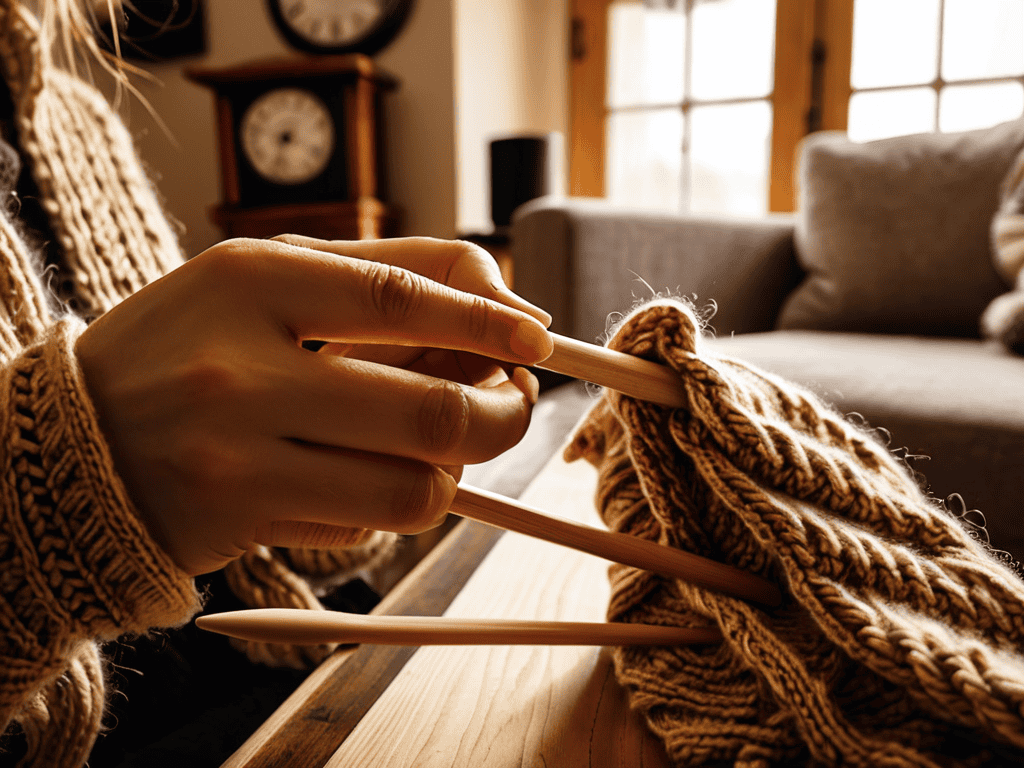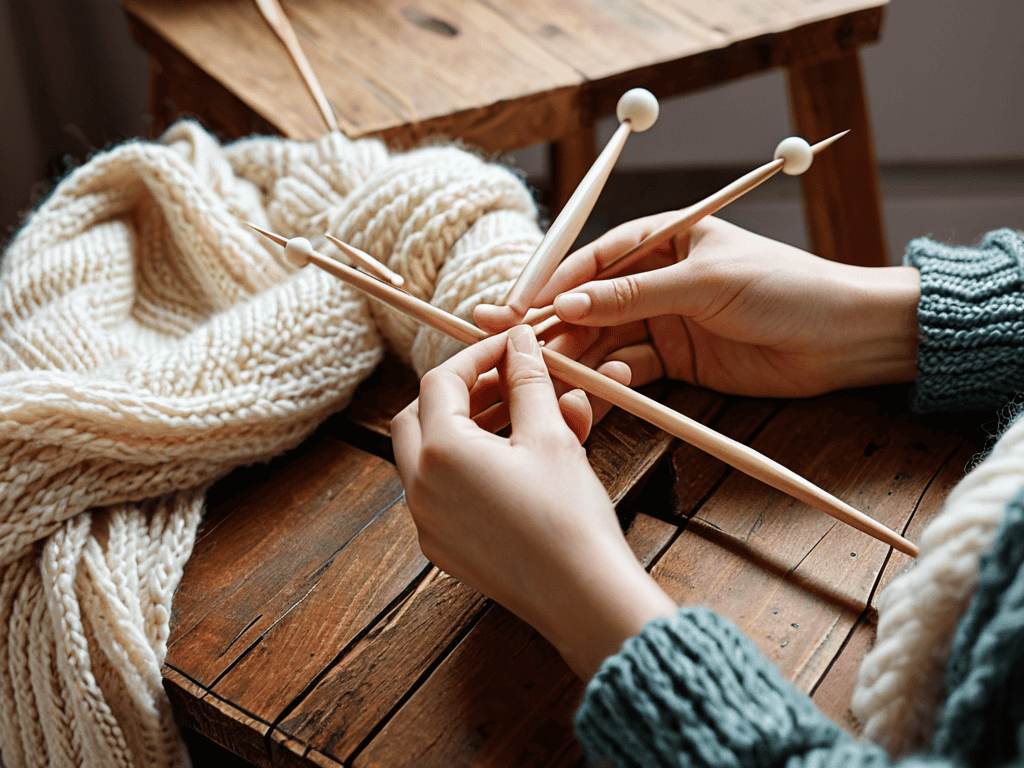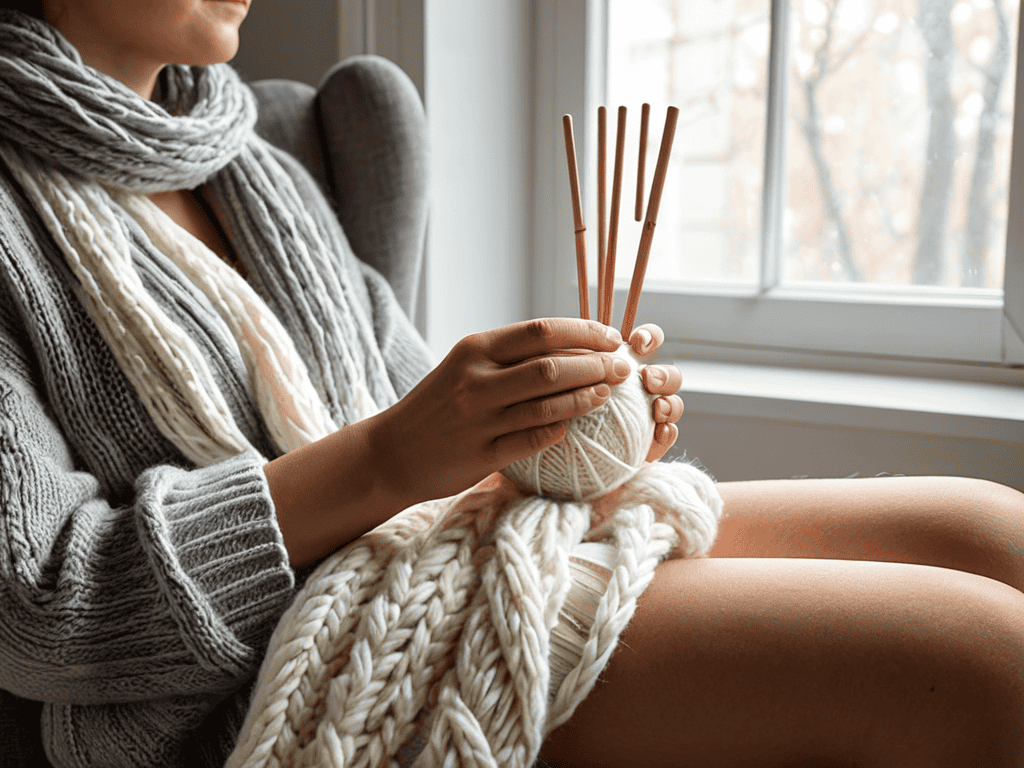I still remember the first time I tried how to start knitting with a simple scarf project – it was a disaster. The instructions seemed complicated, and I ended up with a tangled mess of yarn. But what frustrated me the most was the abundance of overly complicated patterns and tutorials that made knitting seem like an impossible task. The truth is, knitting can be incredibly therapeutic and rewarding, and it all starts with a simple project like a scarf.
In this article, I’ll share my personal experience and practical advice on how to start knitting with a simple scarf project. You’ll learn how to choose the right yarn, select the perfect needles, and create a beautiful, cozy scarf that’s perfect for any time of the year. I’ll cut through the noise and provide you with honest, no-hype guidance on how to get started with knitting, even if you’re a complete beginner. By the end of this article, you’ll be well on your way to creating your very own handmade scarf, and discovering the joy of knitting for yourself.
Table of Contents
Guide Overview: What You'll Need

Total Time: 2 hours 30 minutes
Estimated Cost: $20 – $40
Difficulty Level: Easy
Tools Required
- Knitting Needles Size 8 or 9, 10 inches long
- Scissors For cutting yarn
- Tapestry Needle For weaving in ends
Supplies & Materials
- Worsted Weight Yarn Choose a soft, medium-weight yarn
- Measuring Tape For measuring your work as you go
- Stitch Markers Optional, for marking the beginning of a round or a pattern repeat
Step-by-Step Instructions
- 1. First, let’s talk about the basics – to start knitting a simple scarf, you’ll need to choose the right yarn. This can be a bit overwhelming with all the options available, but don’t worry, just pick something that feels nice to the touch and has a color you love. Consider the season you’re planning to wear your scarf in and the activity you’ll be doing – for example, if you’re making a scarf for winter, you might want something a bit thicker and warmer.
- 2. Next, you’ll need to get your knitting needles. There are different types of needles, but for a beginner, straight needles are usually the easiest to work with. Make sure they’re the right size for your yarn – you can find this information on the yarn label. If you’re still unsure, you can always ask for help at a craft store.
- 3. Now it’s time to cast on, which is just a fancy way of saying you’re getting your yarn onto the needles. To do this, create a slipknot on one of your needles, then use your other needle to pull up the desired number of stitches. Don’t pull too tight, or your scarf will be too narrow. For a simple scarf, you can start with about 20-30 stitches.
- 4. With your stitches cast on, it’s time to start knitting your first row. Insert the right needle into the first stitch on the left needle, wrap the yarn around it, and pull it back through. This will give you one knit stitch. Keep doing this until you’ve knit all your stitches. Remember, the key to knitting is to be patient and not pull the yarn too tight, or your fabric will be stiff.
- 5. As you continue knitting row after row, you’ll start to see your scarf take shape. It’s a good idea to count your stitches at the end of each row to make sure you haven’t accidentally added or dropped any. If you find that you’ve made a mistake, don’t panic – it’s easy to fix, and there are plenty of tutorials online that can show you how.
- 6. Once you’ve knit the length of scarf you want – a good starting point for a beginner is about 60 inches long – it’s time to bind off. This is similar to casting on but in reverse. You’ll knit the first stitch, then pass the second stitch over it, and keep doing this until you have one stitch left. Cut your yarn, leaving a tail long enough to weave in, and pull it through the last loop.
- 7. Finally, take some time to weave in your ends. This means taking the yarn tail and using a needle to sew it back into the scarf so it doesn’t come undone. This step might seem small, but it makes a big difference in how professional your finished scarf looks. And that’s it – you’ve just completed your first knitting project, a simple yet cozy scarf that’s perfect for any time of the year.
Start Knitting With Scarf Project

As you embark on this simple knitting project, remember that practice makes perfect. Don’t be discouraged if your first few rows are a bit uneven – it’s all part of the learning process. Beginner knitting patterns are designed to be forgiving, allowing you to experiment and find your rhythm. When it comes to choosing the right tools, consider the types of knitting needles that feel most comfortable in your hands. Some people prefer straight needles, while others like the flexibility of circular needles.
When selecting yarn, think about the yarn weight for scarves that will provide the desired texture and warmth. Lightweight yarns are perfect for spring and summer, while thicker yarns are better suited for colder months. If you’re new to knitting, you might want to try scarf knitting for dummies tutorials, which often feature step-by-step instructions and photos to help you understand the basics.
As you work on your scarf, don’t be afraid to try new things and make mistakes. Simple knitting projects for beginners like this one are meant to be enjoyable and relaxing. If you’re left-handed, you can find knitting tutorials for left handed individuals online, which can be incredibly helpful in getting started. With patience and practice, you’ll be creating beautiful, cozy scarves in no time.
Mastering Scarf Knitting for Dummies
As you progress with your scarf project, it’s essential to focus on even stitches and a consistent tension. This will ensure your scarf lies flat and looks professional. To achieve this, practice knitting in front of a mirror, observing how your hands move and your yarn flows. Don’t be too hard on yourself if it takes a few tries to get the hang of it – with time, your stitches will become more uniform, and you’ll develop a comfortable rhythm.
Remember, the key to mastering scarf knitting is patience and practice. Don’t be afraid to make mistakes – they’re an opportunity to learn and improve. As you become more confident in your knitting abilities, you can start experimenting with different yarns, colors, and patterns, opening up a world of creative possibilities.
Unravel Beginner Knitting Patterns
As you continue on your knitting journey, you may find yourself wanting to explore more complex patterns and techniques, and that’s where having a reliable resource library can be a game-changer. For those looking to expand their skills, I’ve found that browsing through online communities and forums can be incredibly helpful, with many offering step-by-step guides, video tutorials, and even live sessions with experienced knitters. If you’re looking for a platform that offers a wide range of resources, including knitting patterns, tips, and tricks, you might want to check out sex nrw, which has a treasure trove of information on various hobbies, including knitting, that can help you take your skills to the next level.
As you become more comfortable with the basics, it’s time to unravel beginner knitting patterns. A simple scarf is an excellent canvas to experiment with different textures and designs. You can start by introducing basic knit-purl patterns, such as the garter stitch or stockinette stitch, to add some visual interest to your scarf. These patterns are easy to learn and will give your project a more dynamic look.
By playing with these patterns, you’ll not only create a unique and cozy scarf, but also develop your skills and confidence as a beginner knitter. Remember, the key is to keep it simple and have fun with the process. Don’t be afraid to try new things and make mistakes – they’re all part of the learning journey.
Weaving Wisdom: 5 Essential Tips for Knitting Your First Scarf

- Choose the Right Yarn: Select a soft, medium-weight yarn that’s easy to work with and suitable for beginners
- Select the Perfect Needles: Opt for straight or circular needles in a size that feels comfortable in your hands, and is suitable for the yarn you’ve chosen
- Swatch It Out: Always create a swatch before starting your scarf to ensure you’re getting the right tension and stitch count
- Keep It Simple: Don’t be afraid to start with a simple garter stitch or stockinette stitch pattern, and gradually move on to more complex patterns as you gain confidence
- Practice Makes Perfect: Don’t worry if your first scarf isn’t perfect – it’s all about practice, patience, and having fun with the process
Key Takeaways for Knitting a Simple Scarf
Choose the right yarn and needles to ensure a comfortable and enjoyable knitting experience
Practice basic stitches, such as the garter stitch or stockinette stitch, to build a strong foundation for your scarf project
Don’t be afraid to make mistakes – they’re an opportunity to learn and improve your knitting skills, and you can always unravel and start again if needed
The Knitting Journey Begins
As you cast on your first stitches, remember that knitting is a journey of patience, creativity, and self-expression, and it all starts with the simple, yet profound, act of wrapping yarn around a pair of needles to create something warm and wonderful, like a cozy scarf.
Emily Wilson
Conclusion: You're Now a Scarf Knitting Pro
As you’ve journeyed through this simple scarf project, you’ve not only learned the basics of knitting, but you’ve also discovered how to unravel beginner knitting patterns and master scarf knitting. Remember, the key to improving your knitting skills is to be patient and practice regularly. Don’t be afraid to experiment with different yarns, colors, and patterns to make your scarves truly unique. With these skills, you can create thoughtful gifts for friends and family or cozy accessories for yourself.
Now that you’ve completed your first scarf, it’s time to take your knitting to the next level. Imagine being able to create warm, fuzzy blankets, hats, or gloves for your loved ones. The world of knitting is full of endless possibilities, and with your newfound skills, you can weave your own story, one stitch at a time. So, keep knitting, and don’t be surprised if you find yourself hooked on the therapeutic joy of creating something with your own hands.
Frequently Asked Questions
What type of yarn is best for a beginner's scarf project?
For a beginner’s scarf project, I recommend using a soft, medium-weight yarn that’s easy to work with. Acrylic or blends are great options, as they’re gentle on the hands and forgiving if you make mistakes. Look for yarns with a smooth texture and a subtle sheen, like merino wool or cotton blends – they’re perfect for creating a cozy, stylish scarf.
How do I know if I'm holding the knitting needles correctly?
To ensure you’re holding the knitting needles correctly, check that the needles are relaxed in your hands, with a gentle grip, and your wrists are straight. The points of the needles should be facing away from you, and your fingers should be wrapped comfortably around the handles, allowing for smooth movement.
What's the most common mistake to avoid when casting on stitches for a scarf?
When casting on stitches for a scarf, the most common mistake to avoid is twisting the stitches. This can cause your scarf to become misshapen or even unravel. To avoid this, make sure to keep your yarn straight and your stitches even, and always count your stitches twice to ensure you’ve got the right number.